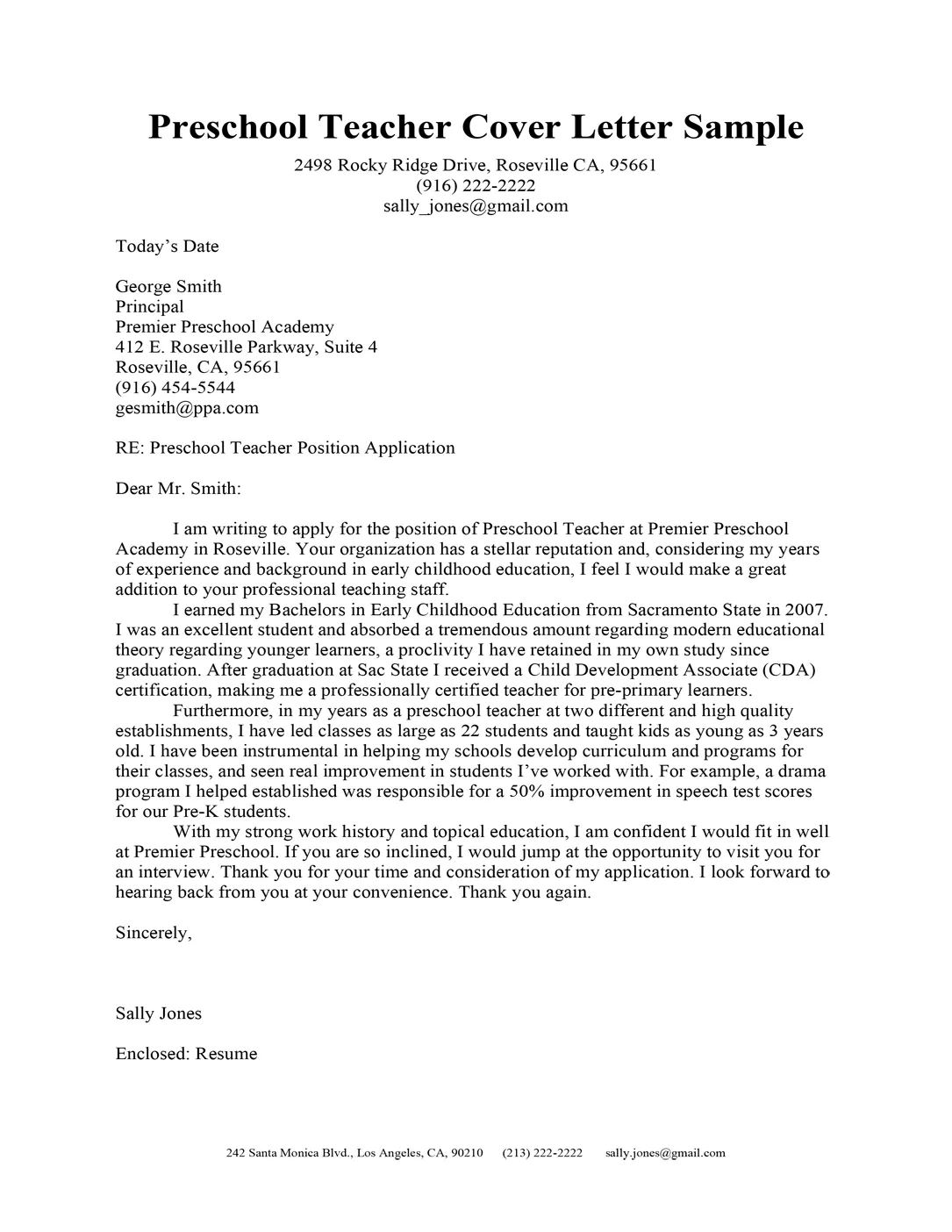What is a Teacher Resume Cover Letter
A teacher resume cover letter is a crucial document that accompanies your resume when applying for teaching positions. It serves as your first introduction to a potential employer, offering you a unique opportunity to highlight your qualifications, experiences, and passion for teaching. Unlike a resume, which provides a factual summary of your professional background, a cover letter allows you to elaborate on specific aspects of your experience, explain your career goals, and showcase your personality. It’s a chance to connect with the hiring manager on a more personal level and demonstrate why you are the perfect fit for the role. The best teacher cover letters go beyond simply restating the information found in the resume, instead, they are a narrative that connects your skills and accomplishments to the needs of the school or district.
Why a Teacher Cover Letter is Important
The importance of a well-crafted teacher cover letter cannot be overstated. It provides a platform to personalize your application and show genuine interest in the specific teaching position. Hiring managers often use cover letters to gauge your communication skills, assess your writing style, and understand your enthusiasm for the opportunity. A strong cover letter helps you stand out from other applicants, especially in a competitive job market. It allows you to explain any gaps in your employment history or to address specific requirements mentioned in the job description. Ultimately, a compelling cover letter significantly increases your chances of getting an interview and ultimately landing your dream teaching job. It is your chance to sell yourself as a teacher and show what you have to offer.
Key Components of a Teacher Cover Letter
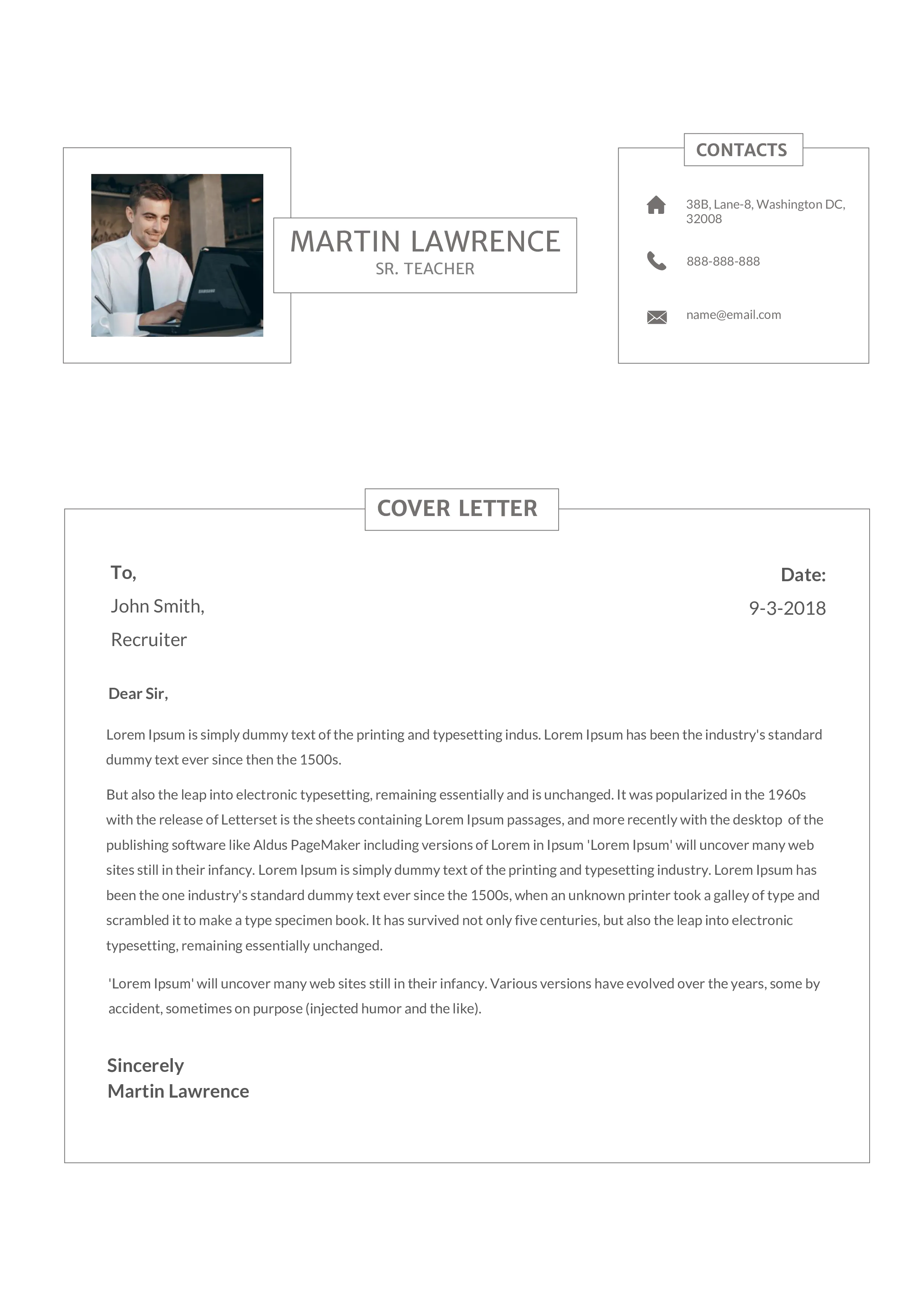
A teacher cover letter typically consists of several key components that work together to create a cohesive and persuasive application. Each section plays a vital role in presenting you as the ideal candidate. Proper formatting is important. Ensure it’s easy to read and professional. The structure should be clean and organized, making it easy for the reader to quickly grasp your key qualifications and understand why you are interested in the position. Consider these as the building blocks that help craft a solid cover letter.
Header Section
The header section of your cover letter should include your contact information (name, address, phone number, and email address) as well as the date and the recipient’s information (hiring manager’s name, title, and the school’s address). This section ensures the hiring manager can easily reach you. Make sure the information is accurate and professional. A well-formatted header sets a professional tone and makes your cover letter look polished and organized. It is the first thing the reader will see, so it should be clear and concise.
Teacher Cover Letter Salutation
The salutation is how you greet the reader. Aim to personalize your cover letter by addressing the hiring manager by name. This shows you’ve done your research and are genuinely interested in the position. If the hiring manager’s name is unavailable, use a professional greeting such as “Dear Hiring Committee”. Avoid generic salutations like “To Whom It May Concern”, which can make your letter feel impersonal. The salutation should be followed by a comma.
Opening Paragraph
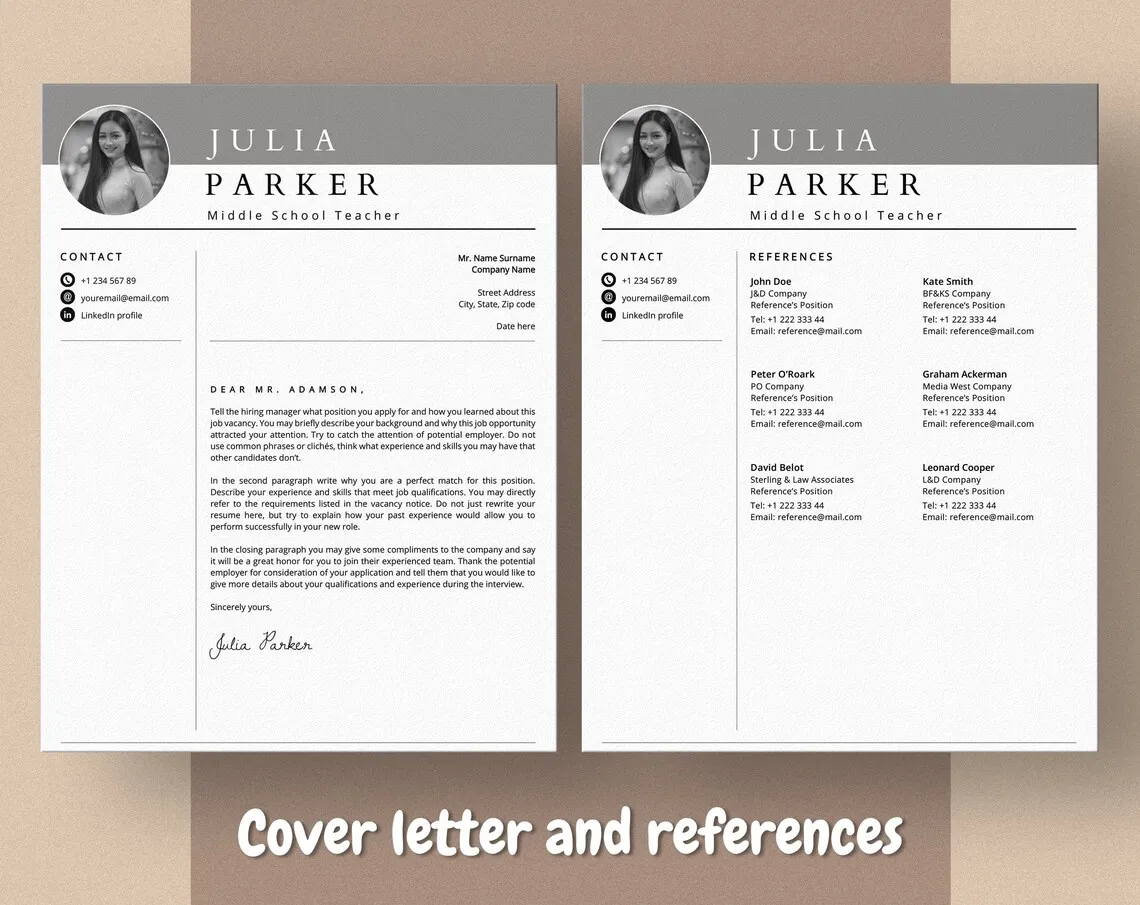
The opening paragraph is your opportunity to grab the reader’s attention and make a strong first impression. Start by stating the specific position you are applying for and where you saw the job posting. Briefly mention why you are interested in the role and the school. Highlight one or two key qualifications or experiences that make you a good fit for the position. This paragraph should be concise and compelling, setting the tone for the rest of your letter. Your opening paragraph should be tailored to the specific job and school.
Highlight Your Skills and Experience
This section is the heart of your cover letter. Provide specific examples of your skills and experiences that align with the job requirements. Focus on your teaching methods, classroom management techniques, and any specialized knowledge you possess. Quantify your accomplishments whenever possible using numbers or data to demonstrate your impact. Show how your skills have led to positive outcomes in the classroom, such as improved student performance or enhanced engagement. Use action verbs to describe your responsibilities and accomplishments. The best cover letters provide vivid details to support your claims.
Emphasize Relevant Accomplishments
Go beyond listing your responsibilities; showcase your accomplishments. Provide specific examples of how you have made a difference in previous teaching roles. Highlight any awards, recognitions, or successful projects you have been involved in. If you’ve implemented new teaching strategies or programs, describe the results. Tailor your accomplishments to the specific requirements of the job description. This section should show the hiring manager the value you can bring to the school. Use the STAR method (Situation, Task, Action, Result) to structure your examples.
Showcase Your Passion for Teaching
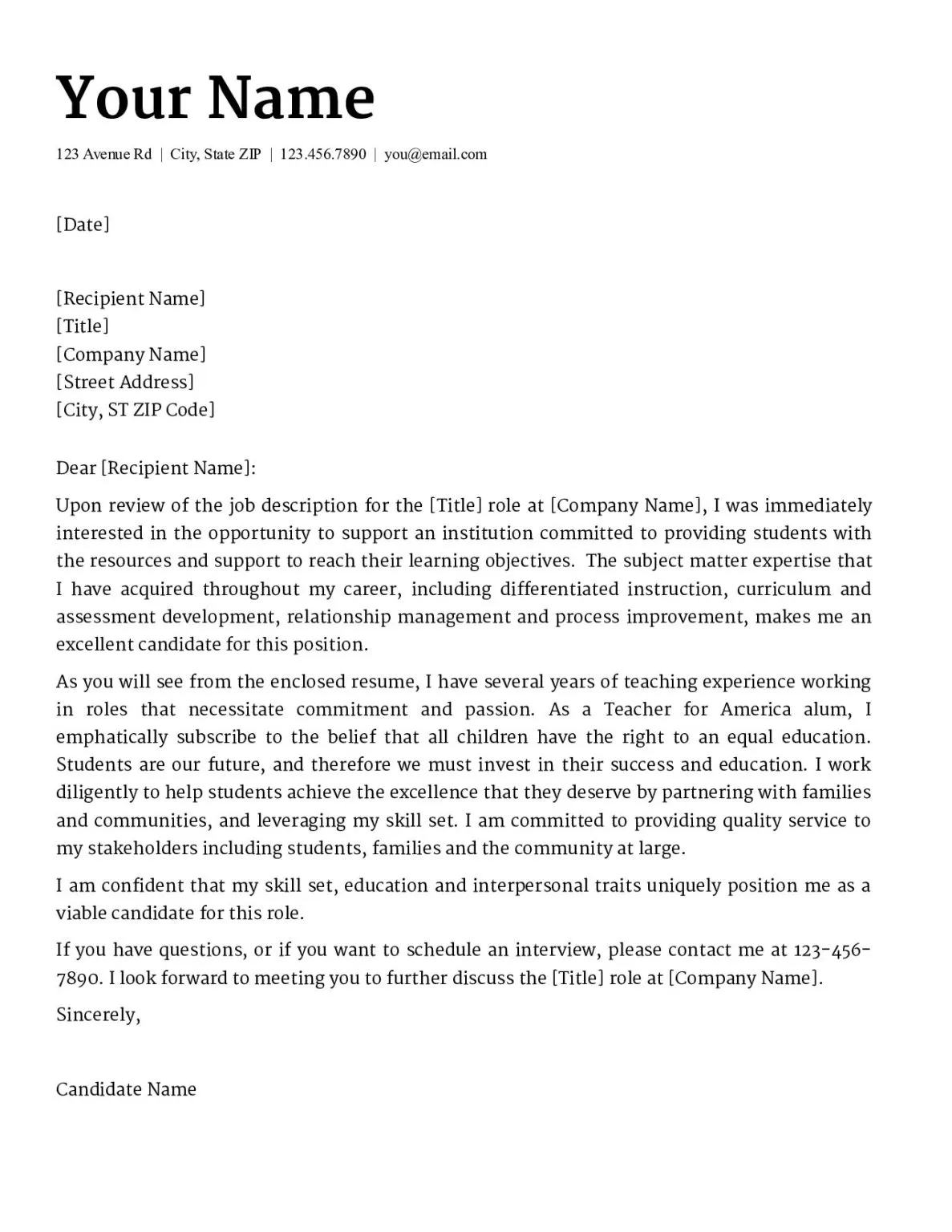
Let your enthusiasm for teaching shine through. Explain why you are passionate about education and what motivates you to work with students. Describe your teaching philosophy and how it aligns with the school’s mission and values. Mention any specific areas of education that you are particularly interested in or knowledgeable about. Show that you are not just looking for a job but are genuinely committed to making a positive impact on students’ lives. Let your personality come through in your writing.
Address Specific School Needs
Research the school and the specific position you are applying for. Tailor your cover letter to address the school’s needs and priorities. If the school emphasizes a particular teaching methodology or has specific goals, explain how your skills and experience align with those needs. Mention any specific programs or initiatives at the school that you are interested in. Showing that you have taken the time to understand the school demonstrates your genuine interest and increases your chances of being selected for an interview. Refer to the school’s mission statement and values.
Teacher Resume Cover Letter Body Paragraphs
The body paragraphs are where you elaborate on your qualifications, experiences, and passion for teaching. Each paragraph should focus on a specific aspect of your profile. Use clear and concise language, and avoid jargon. Provide concrete examples and data to support your claims. Focus on how you can help the school achieve its goals. Structure your body paragraphs logically, organizing your points and making them easy to follow. This will allow the hiring manager to quickly understand your key selling points. Avoid generic statements that can apply to any candidate.
Closing Paragraph
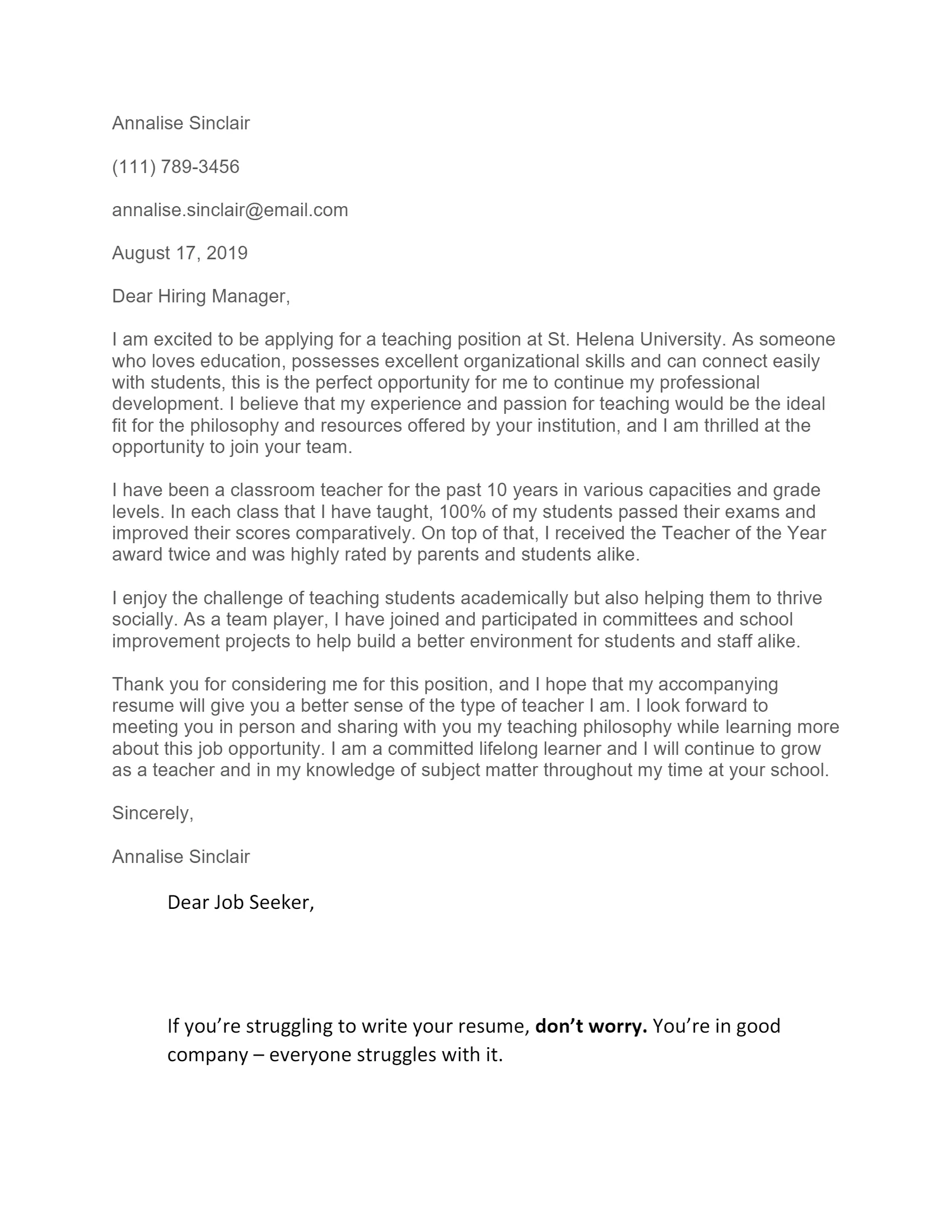
In your closing paragraph, summarize your key qualifications and reiterate your interest in the position. Express your enthusiasm for the opportunity and your eagerness to contribute to the school’s success. Thank the hiring manager for their time and consideration. Include a call to action, such as stating that you are available for an interview at their earliest convenience. Keep it brief and professional, leaving the hiring manager with a positive impression.
Teacher Cover Letter Closing
Use a professional closing such as “Sincerely,” or “Best regards,” followed by your typed name. Leave space for your signature if you are printing your cover letter. Ensure the closing is consistent with the professional tone you’ve maintained throughout the letter. Double-check for any errors before submitting your application. A polished closing reinforces the professionalism of your application.
Proofreading and Editing Your Cover Letter
Proofreading and editing are essential steps in the cover letter writing process. Before submitting your cover letter, carefully proofread it for any spelling or grammatical errors. Check for inconsistencies in formatting and language. Read your cover letter aloud to catch any awkward phrasing or repetitive words. Ask a friend or colleague to review your cover letter as well, as a second pair of eyes can help identify mistakes you might have missed. A well-proofread cover letter demonstrates your attention to detail and professionalism. Make sure your cover letter is free of typos and grammatical errors.
Teacher Cover Letter Templates and Samples
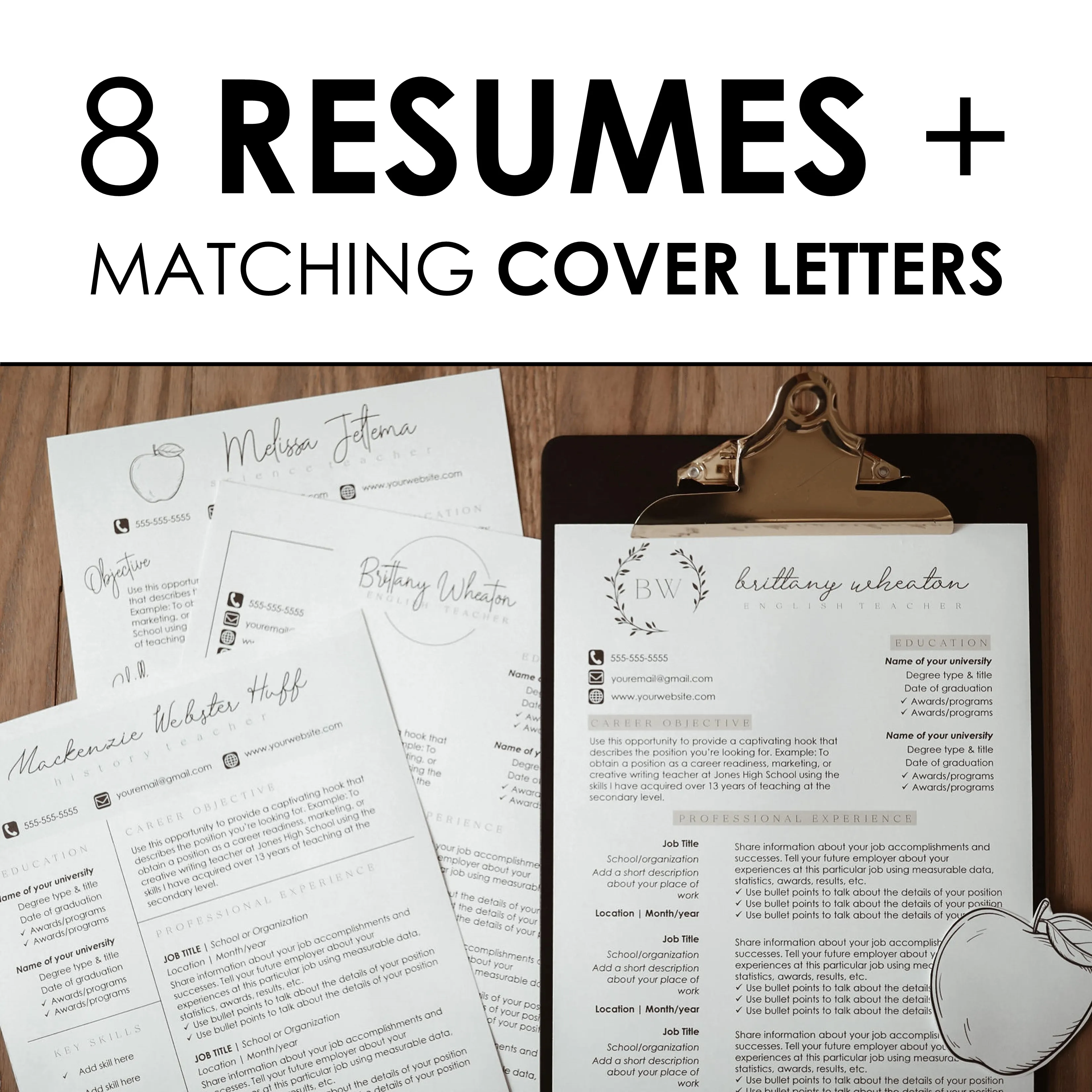
Using teacher cover letter templates and samples can be a great starting point for creating your own cover letter. These resources provide a basic structure and format that you can customize to fit your specific qualifications and the job requirements. However, be sure to tailor the template to your own experiences and avoid simply copying and pasting from the sample. Use the template as inspiration and guidance. Remember, the goal is to create a unique cover letter that reflects your individual strengths and experiences, not a generic document.
Where to Find Teacher Cover Letter Templates
Numerous online resources offer teacher cover letter templates. Websites such as Indeed, Canva, and Resume.com provide a variety of templates that can be downloaded and customized. Professional resume writing services often offer cover letter templates as well. When choosing a template, consider your personal style and the specific requirements of the job you are applying for. Ensure the template is well-formatted and easy to adapt to your information. Be sure the template is professional-looking and reflects the education field.
Review Sample Teacher Cover Letters
Reviewing sample teacher cover letters can provide valuable insights into how to structure your own letter and what kind of content to include. Pay attention to the language, tone, and formatting used in the samples. Analyze how the writers highlight their skills, experience, and passion for teaching. However, don’t simply copy the samples. Use them as a guide to get ideas and adapt the content to your unique profile. Focus on what makes the sample letters effective and how you can apply those principles to your own cover letter.
Tips for a Standout Teacher Cover Letter
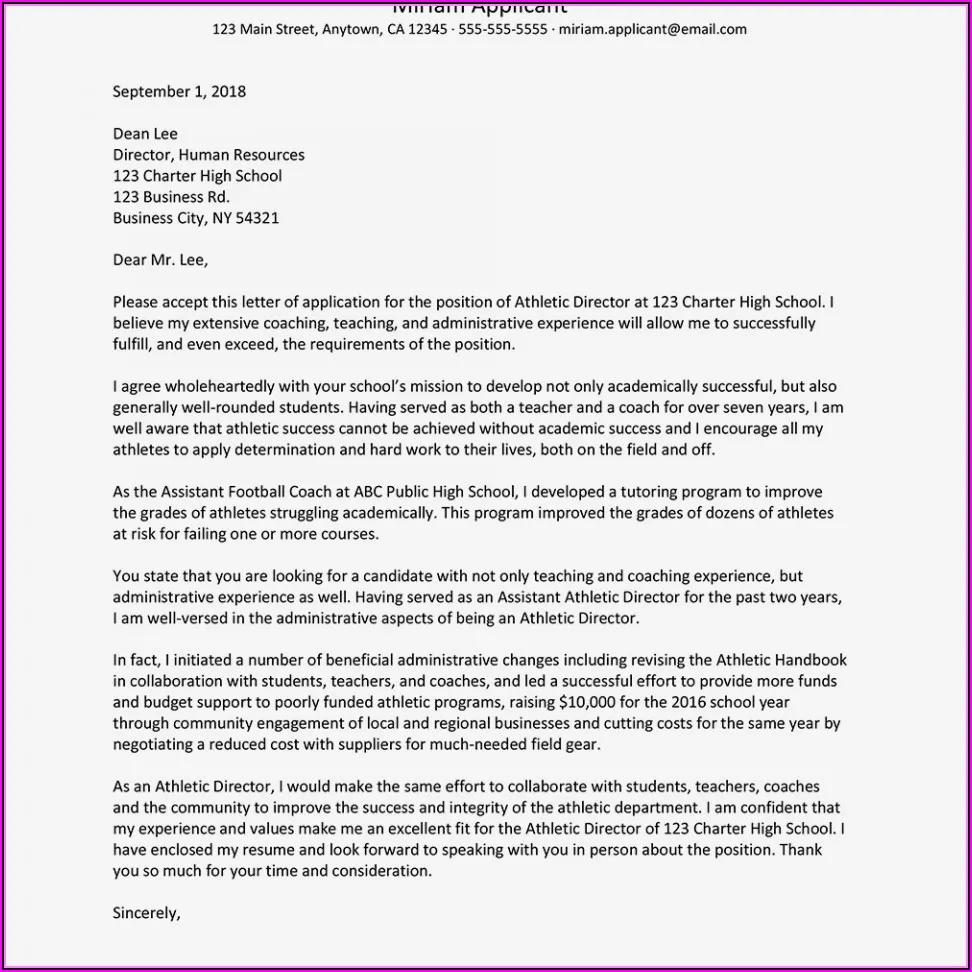
To make your teacher cover letter stand out from the competition, consider the following tips: Tailor your letter to the specific job description and the school’s needs. Use action verbs to describe your accomplishments. Quantify your achievements whenever possible. Show your passion for teaching and your commitment to student success. Proofread and edit your letter carefully to eliminate any errors. Present yourself as a well-organized and communicative professional.
Tailor Your Cover Letter to the Job
One of the most important tips for a standout teacher cover letter is to tailor it to each specific job you apply for. Carefully review the job description and identify the key requirements and qualifications. Highlight the skills and experiences that align with those requirements, providing specific examples to demonstrate your capabilities. Mention the school’s mission, values, and any specific programs or initiatives that resonate with you. Tailoring your cover letter shows that you have taken the time to understand the position and that you are a perfect fit for the role. Avoid using a generic cover letter; instead, personalize it for each application.
Use Action Verbs Effectively
Action verbs bring your accomplishments to life and make your cover letter more engaging. Use strong action verbs to describe your responsibilities and achievements in previous teaching roles. For example, instead of saying “Responsible for creating lesson plans,” write “Developed and implemented engaging lesson plans.” Instead of “Helped students improve their grades,” write “Improved student grades by an average of 15% through individualized tutoring.” Action verbs add impact to your writing and demonstrate your abilities to the hiring manager. This makes your qualifications more memorable.
Formatting and Design Best Practices
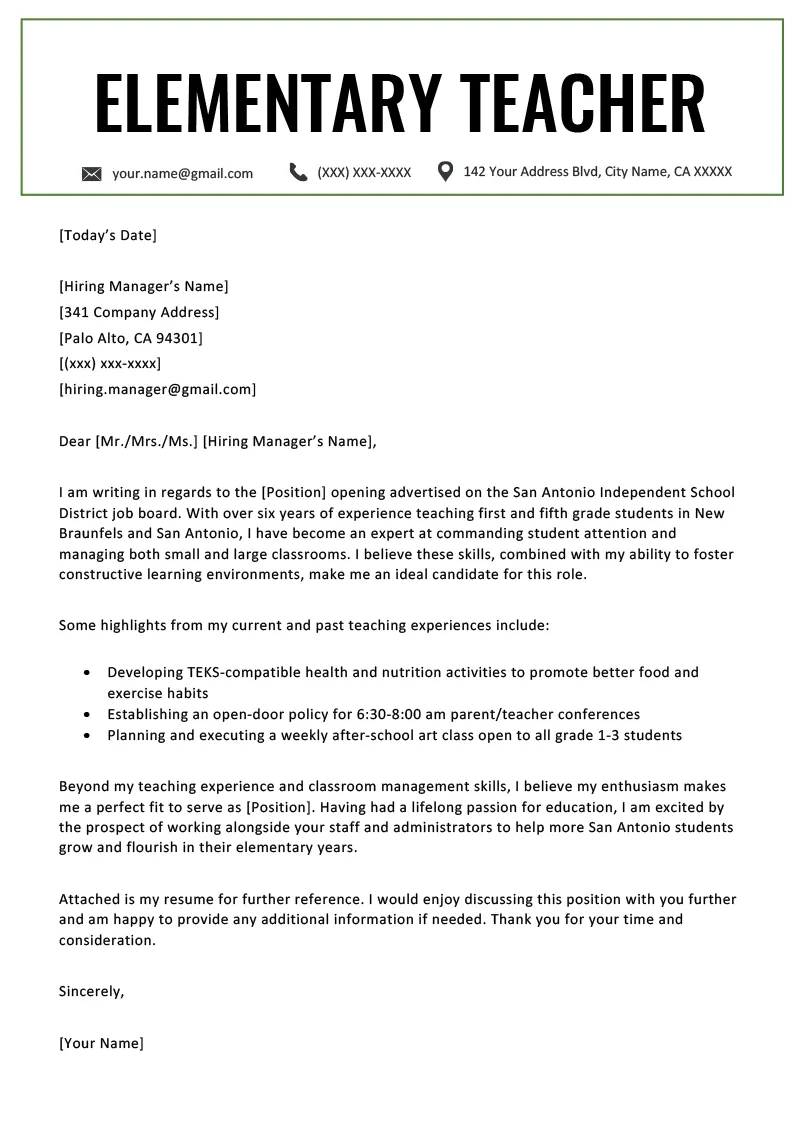
The formatting and design of your teacher cover letter are important. Use a clear, readable font such as Times New Roman or Arial. Ensure your cover letter is properly formatted with consistent margins and spacing. Break up large blocks of text with short paragraphs and bullet points. Use headings and subheadings to organize your content and make it easy to read. A well-formatted cover letter is professional and demonstrates your attention to detail. Keep it clean, and the information easy to find.
Common Mistakes to Avoid
Avoiding common mistakes can significantly improve the effectiveness of your teacher cover letter. One of the most common errors is overusing generic phrases and clichés. Another frequent mistake is ignoring the job description and failing to tailor your letter to the specific requirements of the position. Failing to proofread carefully is also a significant problem, as it can lead to spelling and grammatical errors. By avoiding these common pitfalls, you can increase your chances of creating a cover letter that stands out and gets you noticed.
Overusing Generic Phrases
Avoid using generic phrases and clichés that don’t offer specific information about your skills and experiences. Phrases such as “I am a team player” or “I am a hard worker” are overused and don’t provide any concrete evidence of your abilities. Instead, use specific examples to demonstrate your skills. For instance, instead of “I am a team player,” describe a specific instance where you collaborated effectively with colleagues to achieve a goal. Replace clichés with more impactful language that highlights your accomplishments.
Ignoring the Job Description
Ignoring the job description is a major mistake. The job description provides specific information about the requirements and qualifications the school is looking for. Tailoring your cover letter to address those requirements shows that you have taken the time to understand the position and that you are a good fit for the role. Failure to do so indicates a lack of attention to detail and a lack of genuine interest in the position. Always refer to the job description when writing your cover letter to ensure that you are addressing the specific needs and priorities of the school.
Not Proofreading Carefully
Failing to proofread your cover letter carefully can undermine your professionalism and credibility. Spelling and grammatical errors, formatting inconsistencies, and typos can create a negative impression and make you appear careless or inattentive to detail. Before submitting your cover letter, carefully proofread it for any errors. Ask a friend or colleague to review your letter as well. A well-proofread cover letter shows your attention to detail and your commitment to presenting yourself in the best possible light. This shows the hiring manager that you take your work seriously.
